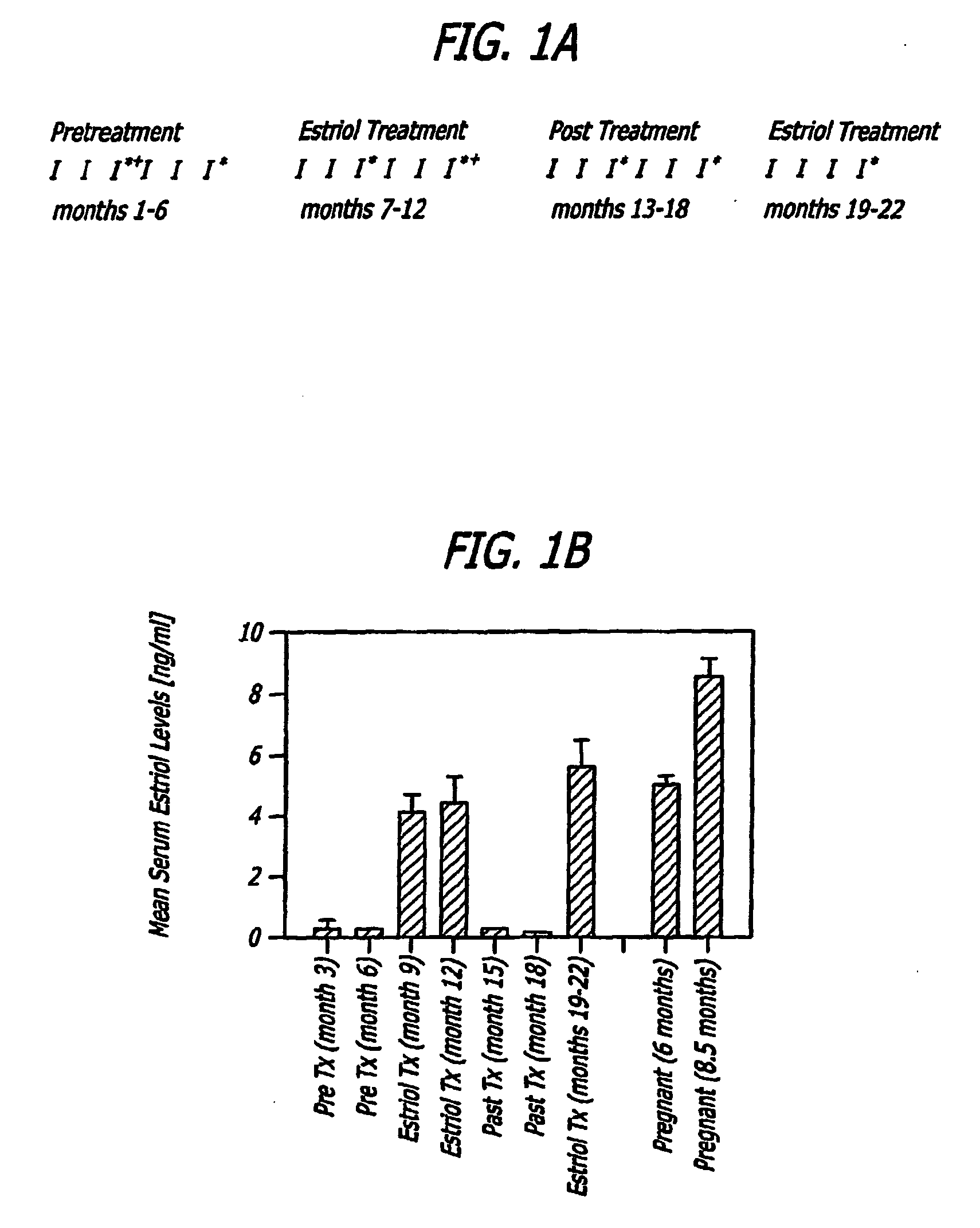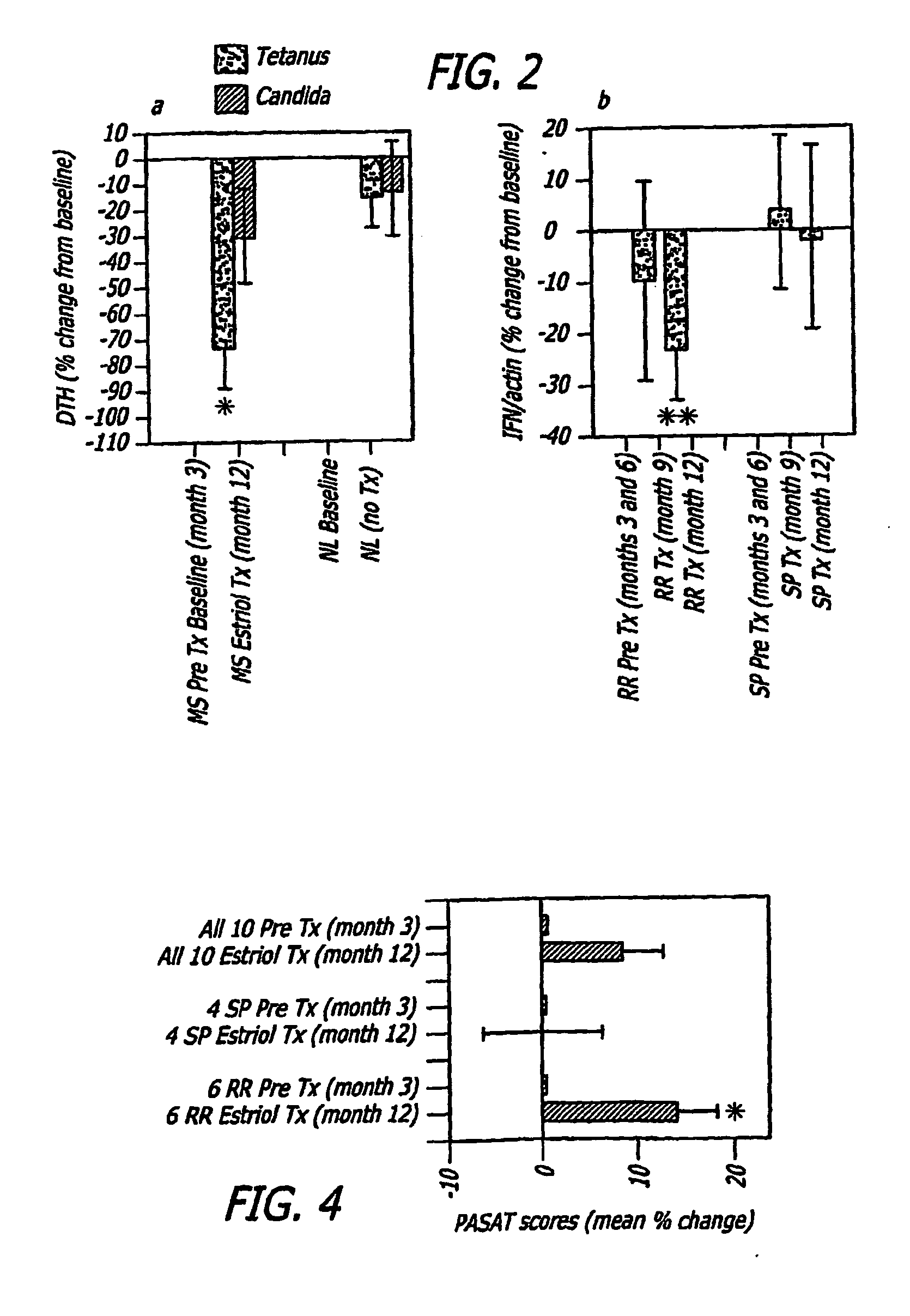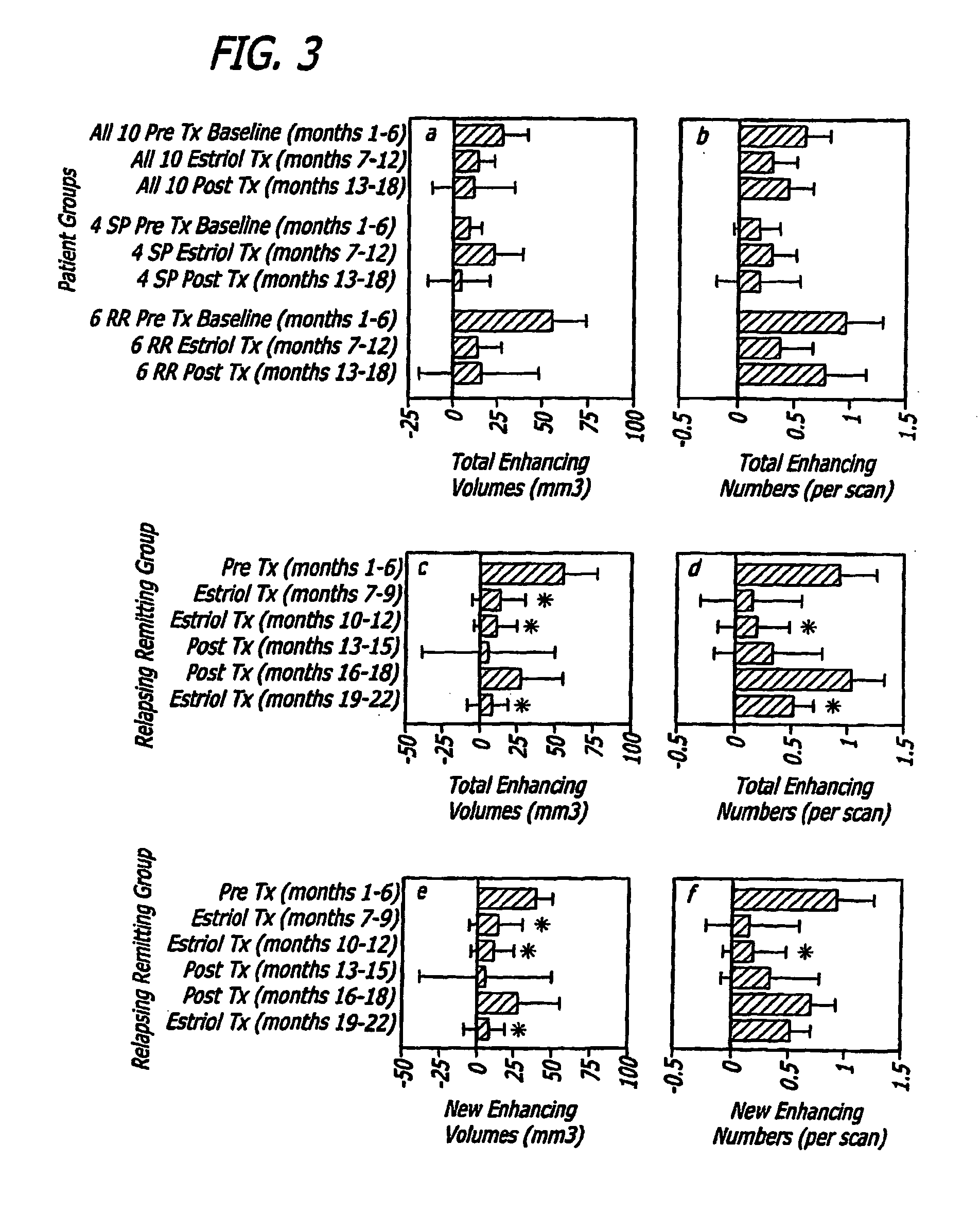Estriol Therapy for Autoimmune and Neurodegenerative Disease and Disorders
a neurodegenerative disease and autoimmune disease technology, applied in the direction of phosphorous compound active ingredients, peptide/protein ingredients, peptide sources, etc., can solve the problems of poor muscle coordination, loss of balance, and impaired vision
- Summary
- Abstract
- Description
- Claims
- Application Information
AI Technical Summary
Benefits of technology
Problems solved by technology
Method used
Image
Examples
example 1
[0096]Methods: Trial Design. A crossover design was used with monthly brain MRIs during the six month pretreatment period, the six month treatment period with oral estriol (8 milligrams / day) and the six month post treatment period, with clinical and laboratory evaluations as demonstrated (FIG. 1A).
[0097]Inclusion Criteria. Women with clinically definite MS, ages 18-50, with an EDSS 0-6.5 who had been off interferon beta and copolymer-1 for at least six months, and had no steroid treatment for at least three months were eligible. At least 5 cm3 of lesion burden on a screening T2 weighted brain MRI was required. Subjects who were pregnant or nursing, on oral contraceptives or hormone replacement therapy, or who had a history of thrombosis, neoplasm or gynecologic disease, or who had been treated in the past with total lymphoid irradiation, monoclonal antibody, T cell vaccination, cladribine or bone marrow transplantation were excluded.
[0098]Patients. Twelve female patients with clinic...
example 2
[0111]Progesterone in combination with estrogen treatments has been shown to protect against endometrial proliferation and cancer. Indeed, estrogen cannot be given for a lengthy period of time in an “unopposed” fashion in any woman with a uterus. Thus, seven of the 12 patients wanted to remain on estriol after completion of the 18 month study. These patients were then put back on 8 milligrams of estriol and 100 milligrams of progesterone per day. In an extension phase of the study which began after completion of the post treatment phase. This extension phase was 4 months in duration. Each of the seven patients had an MRI every month during the 4 month extension phase. Additionally, each of the seven patients was examined neurologically and had serologic studies done at the end of this phase. No known negative effects 100 milligrams of progesterone in combination therapy with 8 milligrams of estriol treatment were noted.
example 3
[0112]In a pilot clinical trial, non-pregnant female MS patients were treated with estriol to induce a pregnancy level in serum. This treatment reduced the prototypic in vivo Th1 response, the delayed type hypersensitivity response, as well as reduced Th1 (TNFα, IFNγ) and increased TH2 (IL5, IL10) cytokine production by peripheral blood monuclear cells (Siotte et al., 2002; Soldan et al., 2003). Also, gadolinium-enhancing lesions on serial brain magnetic resonance images (MRIs) were reduced by >80% (Sicotte et al., 2002). Because enhancing lesion activity on brain MRI is a putative biomarker for relapses in MS, these reports together suggested that estriol treatment may recapitulate the anti-inflammatory effect of pregnancy in relapsing remitting MS (RRMS).
PUM
| Property | Measurement | Unit |
|---|---|---|
| concentrations | aaaaa | aaaaa |
| concentrations | aaaaa | aaaaa |
| concentrations | aaaaa | aaaaa |
Abstract
Description
Claims
Application Information
 Login to View More
Login to View More - R&D
- Intellectual Property
- Life Sciences
- Materials
- Tech Scout
- Unparalleled Data Quality
- Higher Quality Content
- 60% Fewer Hallucinations
Browse by: Latest US Patents, China's latest patents, Technical Efficacy Thesaurus, Application Domain, Technology Topic, Popular Technical Reports.
© 2025 PatSnap. All rights reserved.Legal|Privacy policy|Modern Slavery Act Transparency Statement|Sitemap|About US| Contact US: help@patsnap.com



